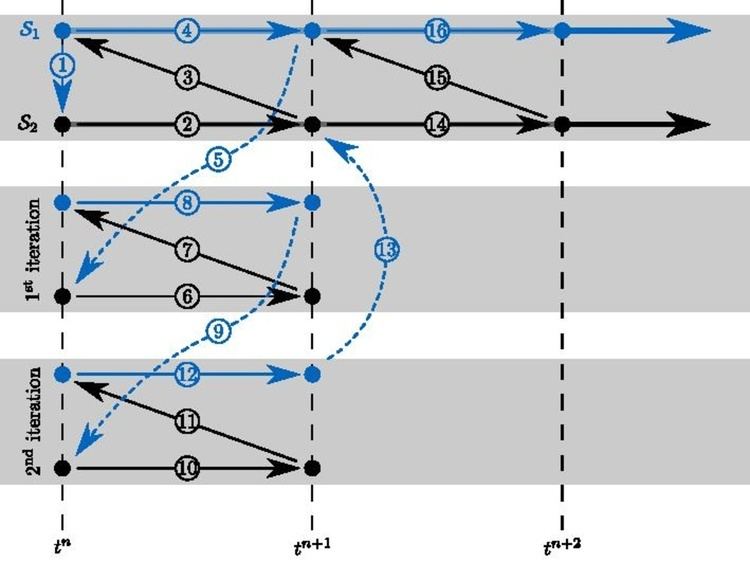 | ||
In co-simulation the different subsystems which form a coupled problem are modeled and simulated in a distributed manner. Hence, the modeling is done on the subsystem level without having the coupled problem in mind. Furthermore, the coupled simulation is carried out by running the subsystems in a black-box manner. During the simulation the subsystems will exchange data.
Contents
Problem Partitioning - From Monolithic to Co-Simulation
The partitioning procedure identifies the process of spatial separation of the coupled problem into multiple partitioned subsystems.
Problem Decomposition
The term decomposition is used for the process of defining the input/output relations for each individual subsystem.
Functional Mock-up Interface
For signals co-simulation can be performed with a standardized interface called Functional Mock-up Interface.
Agent-based model
Agent-based model is a modeling approach of complex systems. Each simulator is seen as an agent and "behaves" according to its associated simulator. The agents interact, exchange data, between each other in a network. The simulation environment Mecysco is an implementation of this approach [1]
